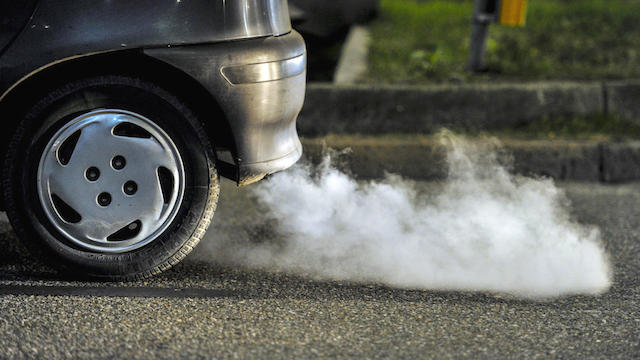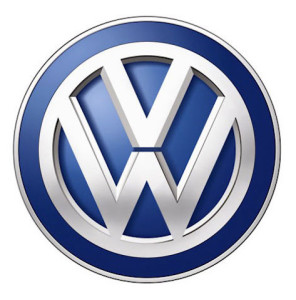
Real-world exhaust emissions tests being introduced in Europe next year are forcing carmakers to abandon smaller displacement engines with heat-generating turbochargers and go back to building bigger engines.
 Why? Because the smaller European engines, many with two and three cylinders, will be exposed as emissions cheats under the new tests. The smaller diesels will spew out more nitrogen oxide (NOx.) than current tests show and the petrols will release more carbon monoxide (CO2) and be less fuel efficient.
Why? Because the smaller European engines, many with two and three cylinders, will be exposed as emissions cheats under the new tests. The smaller diesels will spew out more nitrogen oxide (NOx.) than current tests show and the petrols will release more carbon monoxide (CO2) and be less fuel efficient.
From next year all new European models will undergo on-the-road tests for NOx, rather than the current easygoing laboratory tests. From 2019 cars will need to comply with the new standards. From 2021, the new fuel and CO2 tests come into force.
A special report by news agency Reuters says carmakers have been forced into the costly U-turn because the more realistic tests will show up deep flaws in smaller engines. Renault, General Motors and Volkswagen are preparing to enlarge or scrap some of their small car engines over the next three years, it said.
Other carmakers are expected to follow. The reversal makes it even harder to meet carbon dioxide (CO2) targets and will challenge development budgets already stretched by a rush into electric cars and hybrids.
 “The techniques we’ve used to reduce engine capacities will no longer allow us to meet emissions standards,” Alain Raposo, head of powertrain at the Renault-Nissan alliance, told Reuters. “We’re reaching the limits of downsizing,” he said.
“The techniques we’ve used to reduce engine capacities will no longer allow us to meet emissions standards,” Alain Raposo, head of powertrain at the Renault-Nissan alliance, told Reuters. “We’re reaching the limits of downsizing,” he said.
For years, carmakers kept pace with European Union CO2 goals by shrinking engine capacities, while adding turbochargers to make up lost power. Three-cylinder motors below one litre have become common in cars up to VW Golf-sized compacts; some Fiat models run on twin-cylinders.
These mini-motors sailed through official lab tests conducted – until now – on rollers at unrealistically moderate temperatures and speeds. Carmakers, regulators and green groups knew that real-world CO2 and nitrogen oxide (NOx) emissions were much higher, but the discrepancy remained unresolved.
All that is about to change. Independent testing in the wake of VW’s exposure last year as a US diesel emissions cheat has shed more light on the scale of the problem facing automakers.
Carmakers’ smallest European engines, when driven at higher loads than current tests allow, far exceed legal emissions levels. Heat from the souped-up turbos generates diesel NOx up to 15 times over the limit; gasoline equivalents lose fuel-efficiency and spew fine particles and carbon monoxide.
 “They might be doing okay in the current European test cycle, but in the real world they are not performing,” said Pavan Potluri, an analyst with influential forecaster IHS Automotive. “So there’s actually a bit of ‘upsizing’ going on, particularly in diesel.”
“They might be doing okay in the current European test cycle, but in the real world they are not performing,” said Pavan Potluri, an analyst with influential forecaster IHS Automotive. “So there’s actually a bit of ‘upsizing’ going on, particularly in diesel.”
Carmakers have kept understandably quiet about the scale of the problem or how they plan to address it. But industry sources shared details with Reuters of a retreat already underway.
GM will not replace its current 1.2-litre diesel when the engines are updated on a new architecture arriving in 2019. The smallest engine in the range will be 25-30 per cent bigger.
VW is replacing its 1.4 litre three-cylinder diesel with a four-cylinder 1.6 for cars like the Polo, while Renault is planning a near-10 per cent enlargement to its 1.6 litre R9M diesel, which had replaced a 1.9-litre model in 2011.
In real-driving conditions, the French carmaker’s 0.9-litre petrol H4Bt injects excess fuel to prevent overheating, resulting in high emissions of unburned hydrocarbons, fine particles and carbon monoxide.
Cleaning that up with exhaust technology would be too expensive, the report said, so the three-cylinder will be dropped for a larger successor developing more torque at lower regimes to stay cool.
The turnaround on size is a European phenomenon, coinciding with diesel’s sharp decline in smaller cars. Larger engines prevalent in North America, China and emerging markets still have room to improve real emissions by shrinking.
 Fiat, Renault and Opel have the worst real NOx emissions among the newest “Euro 6” diesels, according to test data from several countries. They now “face the biggest burden” of compliance costs, brokerage Evercore ISI warned last month.
Fiat, Renault and Opel have the worst real NOx emissions among the newest “Euro 6” diesels, according to test data from several countries. They now “face the biggest burden” of compliance costs, brokerage Evercore ISI warned last month.
Such reckonings are the inevitable result of on-the-road testing, said Thomas Weber, head of research and development at Mercedes, which has nothing below four cylinders. “It becomes apparent that a small engine is not an advantage,” Weber told Reuters. “That’s why we didn’t jump on the three-cylinder engine trend.”
The tougher tests may kill diesel engines smaller than 1.5 litres and petrols below about 1.2, analysts predict. That in turn increases the challenge of meeting CO2 goals, adding urgency to the scramble for electric cars and hybrids.
VW has been far more vocal about ambitious plans announced in June to sell 2-3 million electric cars annually by 2025 – about a quarter of its current vehicle production.
“You can’t downsize beyond a certain point, so the focus is shifting to a combination of solutions,” said Sudeep Kaippalli, a Frost & Sullivan analyst who predicts a hybrids surge. In future, he said, “downsizing will mean you take a smaller engine and add an electric motor to it”.
